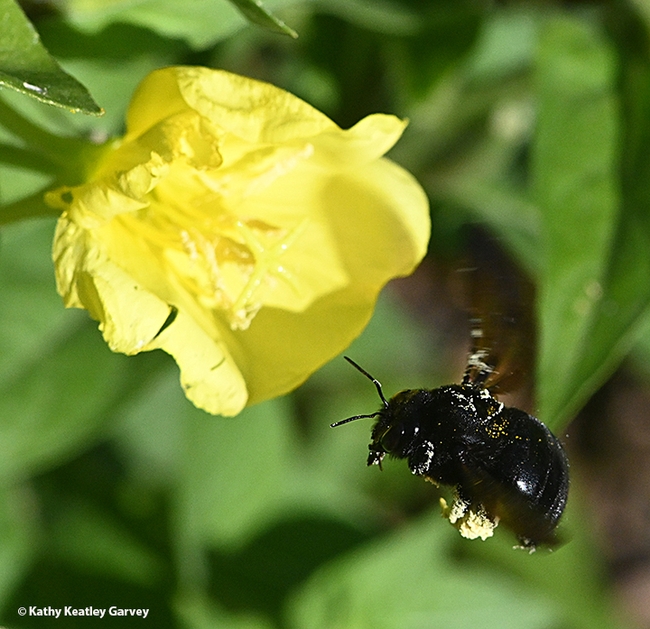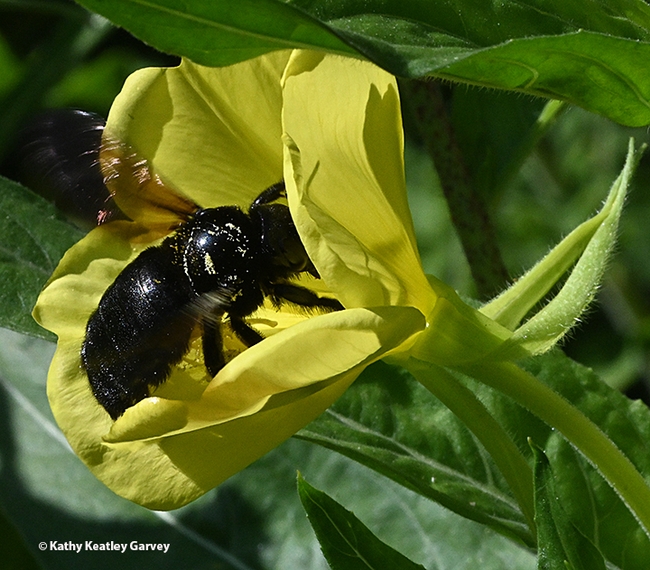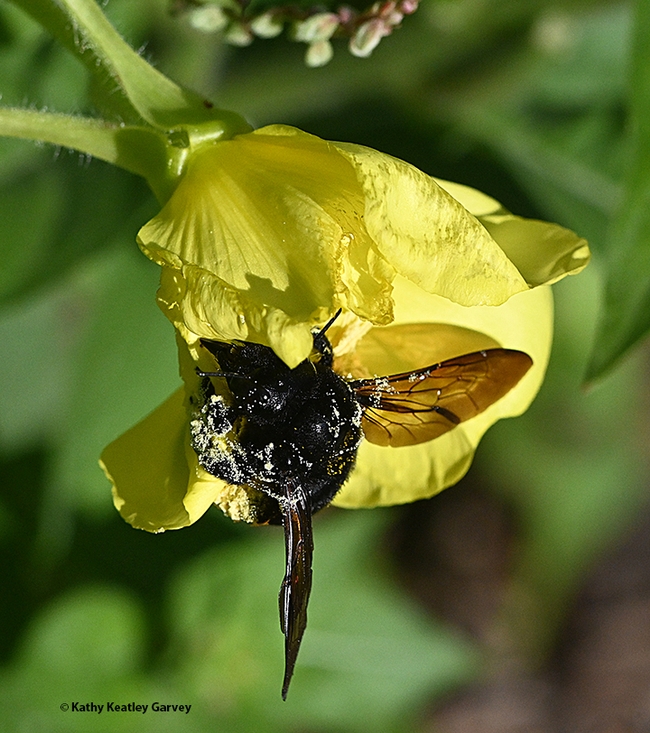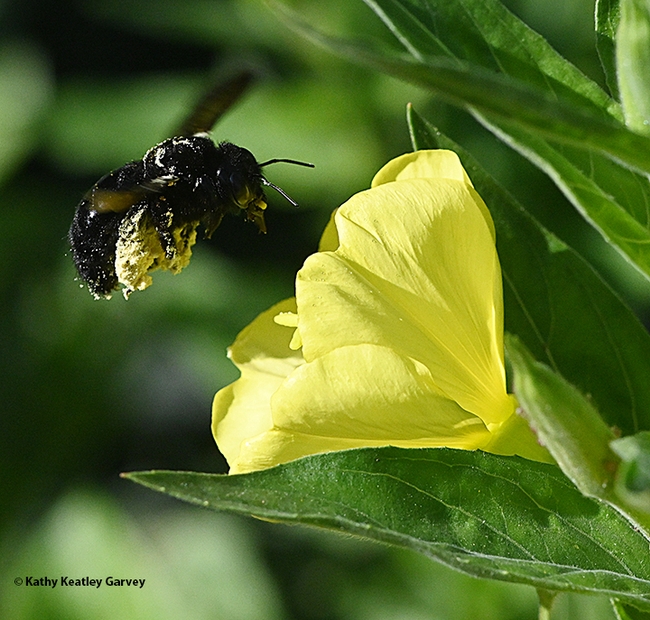As National Pollinator Month winds down, let's visit a "morning" carpenter bee and an evening primrose.
The evening primrose, Oenothera biennis, native to the Americas, is unique in that it blooms as night (as its name implies) and dies back at noon.
Early in the morning on June 25, we spotted a female Valley carpenter bee, Xylocopa sonorina, heading over to an evening primrose. This four-petaled yellow flower, is lemon-scented. Simply spectacular!
Our carpenter bee, already dusted with yellow, made a bee-line for some more nectar and pollen. The yellow pollen resembled gold dust on a miner.
"Over the centuries, indigenous people in North America have used the plant as food and traditional medicine," according to Wikipedia. "The seeds of the plant are important food for birds, including American goldfinch, Northern bobwhite, and mourning dove, and it is a larval host for both the primrose moth and the white-lined sphinx moth. Bumblebees and honeybees also visit the flowers."
So do carpenter bees! (And syrphid flies and more!)
Attached Images:

A female Valley carpenter bee, Xylocopa sonorina, heads for evening primrose in a Vacaville pollinator garden. (Photo by Kathy Keatley Garvey)

The Valley carpenter bee slides inside the evening primrose. (Photo by Kathy Keatley Garvey)

The Valley carpenter bee rolling in the pollen of the evening primrose. Note the metallic wings. (Photo by Kathy Keatley Garvey)

And it's off to forage in another blossom. Valley carpenter bee is loaded with pollen. (Photo by Kathy Keatley Garvey)